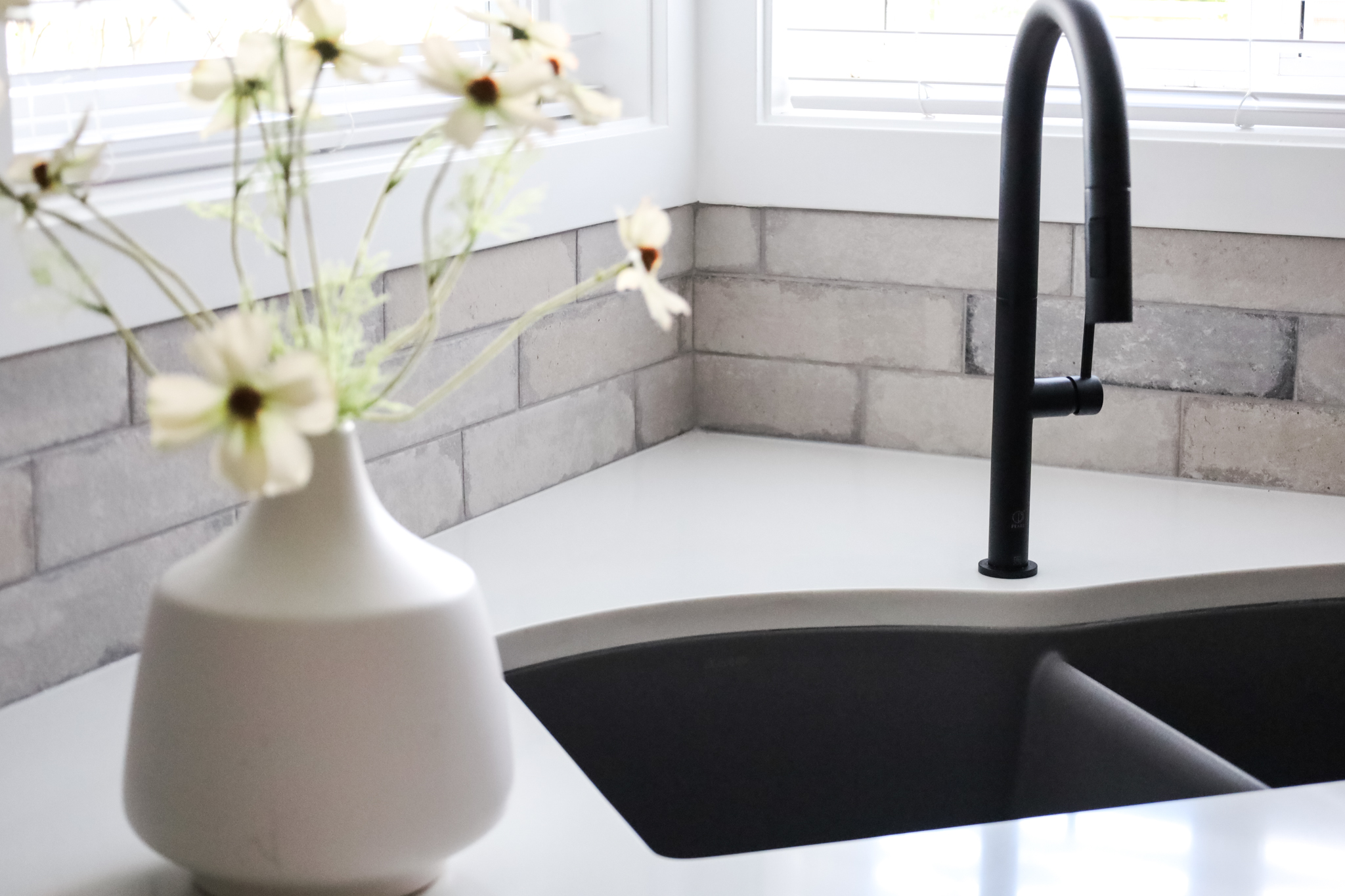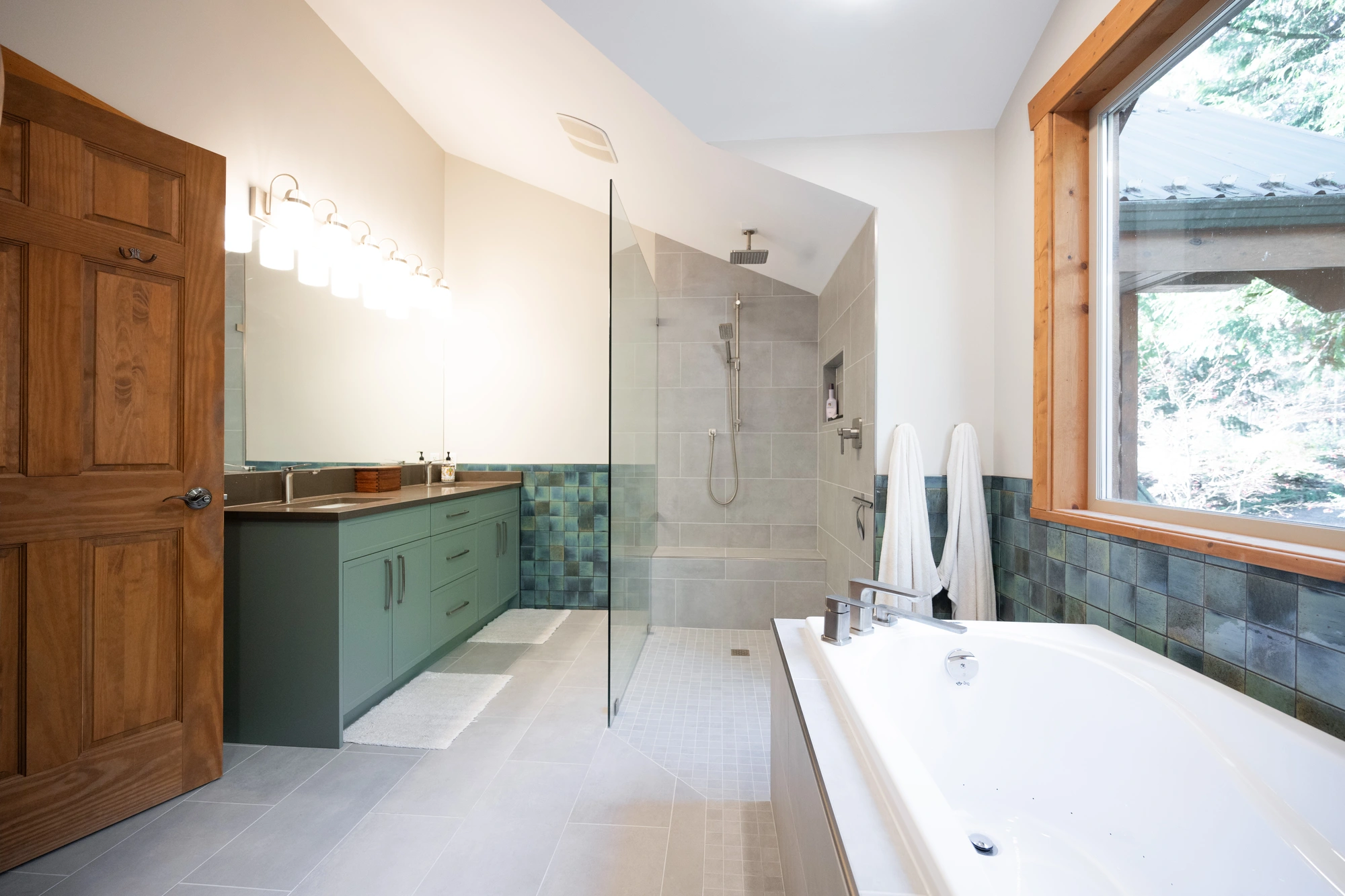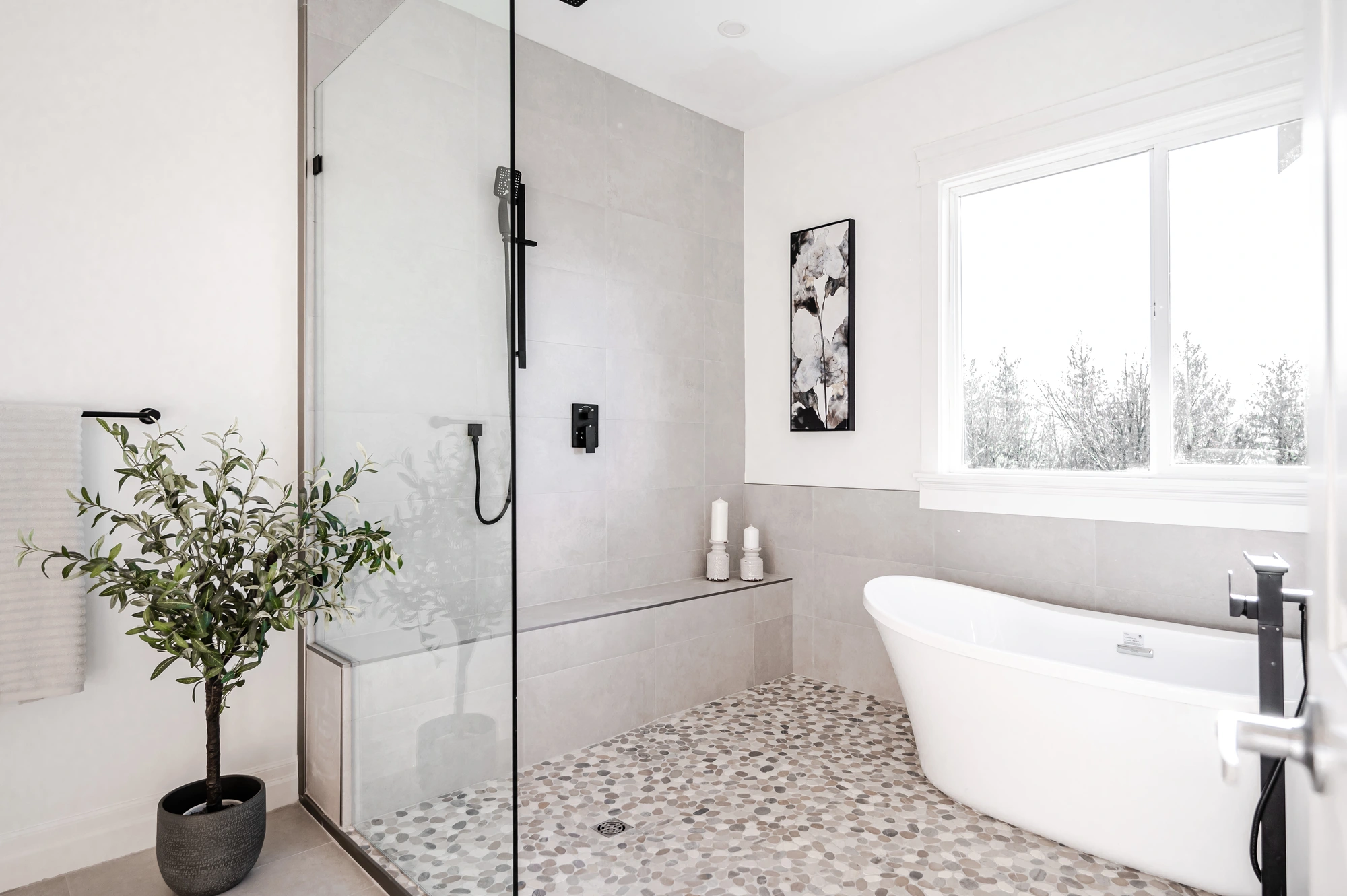It can be difficult to design small bathrooms, finding the perfect balance of space and functionality, while also using colors that open up the space. Colors and patterns play a huge role in the ambient size of bathrooms, especially in small ones. In today’s blog post we are going to cover how using color and certain patterns can make small bathrooms appear larger in both space and height.
1. Go Light, Bright, and Tonal
Light colors have long been a go-to trick for making spaces feel larger. Soft neutrals, whites, blush tones, and cool pastels reflect more light and reduce visual boundaries. But the real magic happens when you stick to a tonal palette—using multiple shades of the same color across walls, floors, and fixtures.
Why it works: A cohesive palette creates a seamless, uninterrupted flow that visually stretches the room. White-on-white or beige-with-blush schemes are especially effective in opening up tight spaces.
Livwell Tip: Choose satin or semi-gloss finishes for walls—they reflect light without showing every imperfection.
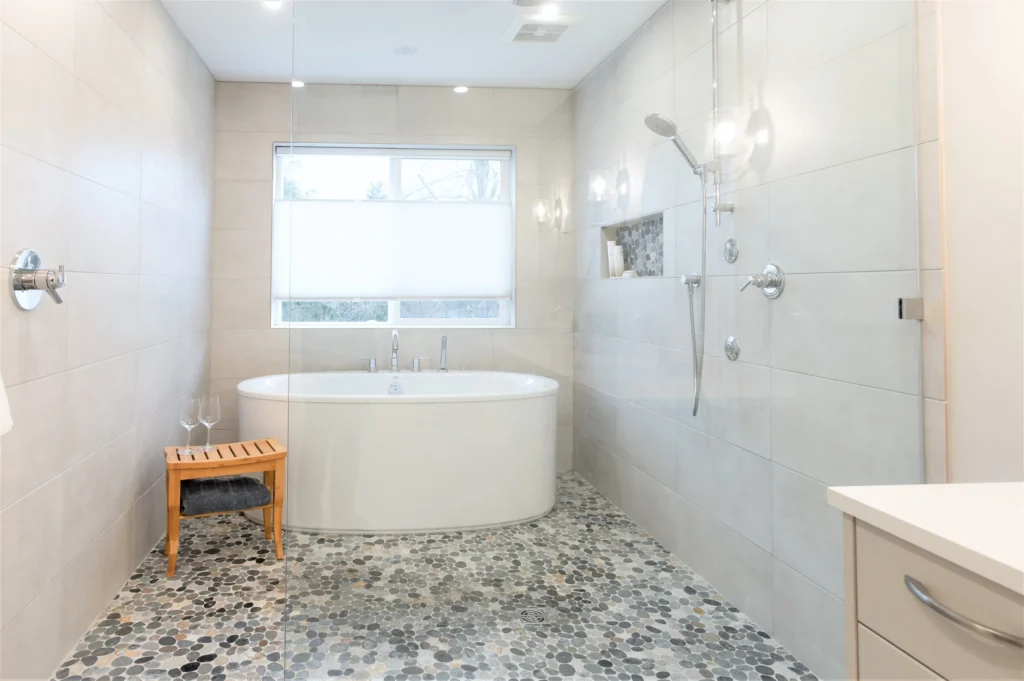
2. Vertical Lines = Visual Height
Want to add height to your bathroom? Vertical patterns draw the eye upward, creating the illusion of higher ceilings.
Try: Vertically stacked tiles, striped wallpaper (subtle or bold, depending on your style), vertical wood paneling or shiplap, floor-to-ceiling mirrors.
Design Bonus: Pair vertical elements with tall, narrow vanities or shelving to elongate the space even more.
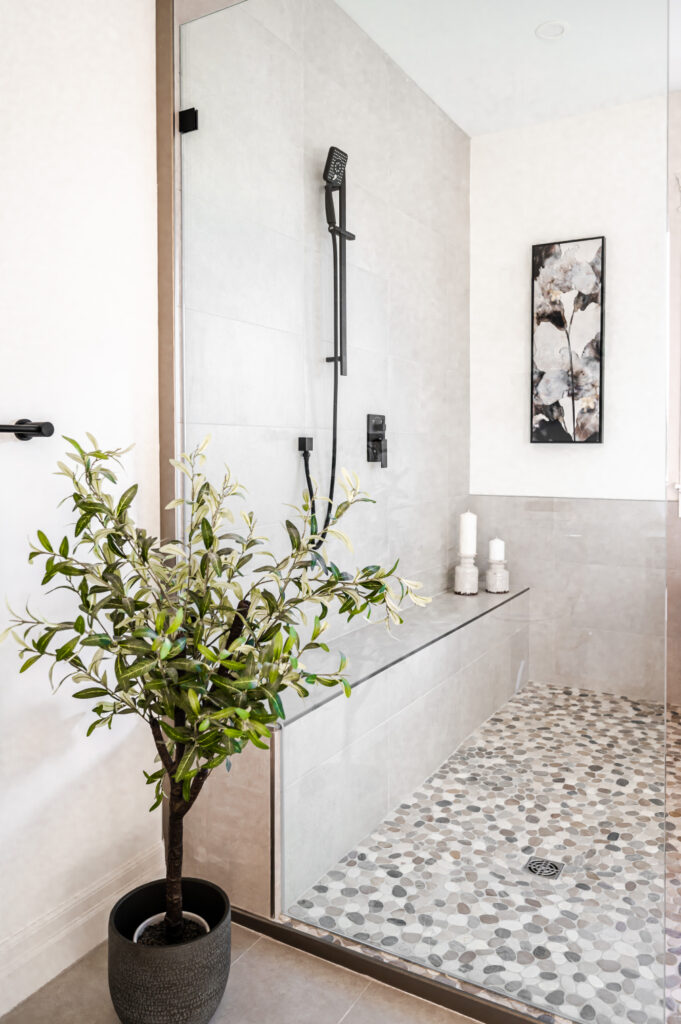
3. Play with Scale in Patterns
While it might seem counterintuitive, larger-scale patterns can actually make small spaces feel more expansive. Tiny, busy prints can overwhelm a compact bathroom, while bold, oversized patterns bring in drama and depth without visual clutter.
Best uses: Oversized floral or geometric wallpaper on one feature wall, large hexagonal or herringbone tiles, statement floor tiles with wide spacing.
LivWell Insight: Stick to a limited color palette within your patterns to avoid overstimulation.
4. Monochrome Magic
Monochrome bathrooms—think shades of grey, blue, or even matte black—can be surprisingly effective in small spaces. When everything belongs to the same color family, it blurs the boundaries between walls, fixtures, and floors.
Key to success: Add contrast through texture (matte vs. glossy, smooth vs. natural stone) to keep the room from feeling flat.
5. Reflect and Multiply with Mirrors
Strategic mirror placement is one of the oldest tricks in the design book—and for good reason. Mirrors reflect both light and pattern, doubling the perceived size of the room.
Pro tips: Use large, frameless mirrors above vanities, install mirrored cabinets for extra storage and depth, consider a full mirror wall for maximum impact.
Livwell Tip: Place mirrors across from windows or light sources to bounce natural light deeper into the room.
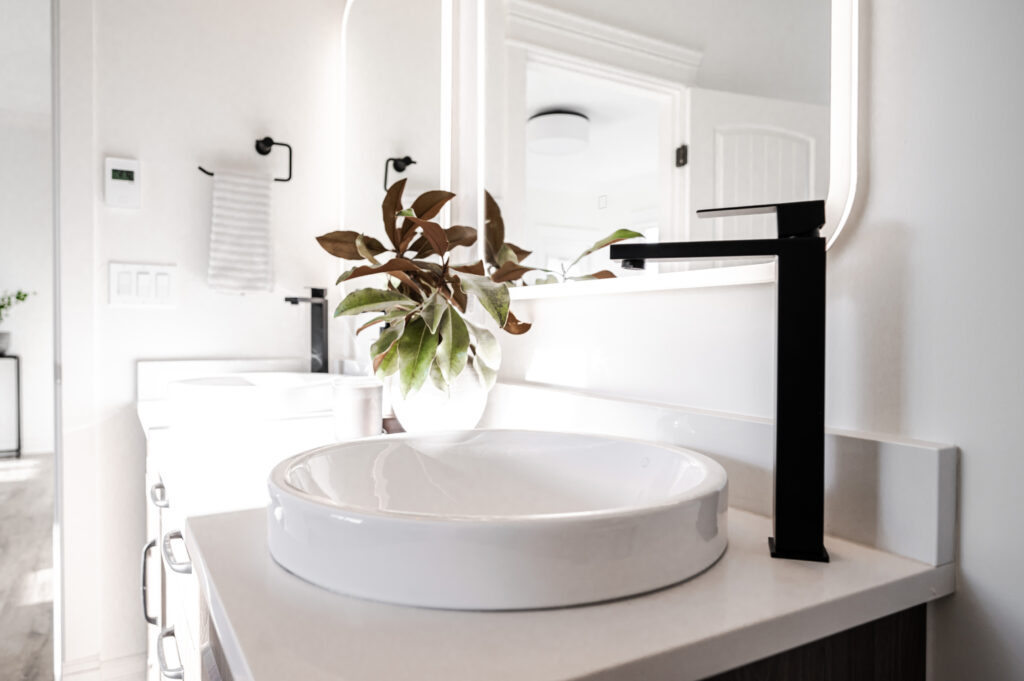
6. Accent with Purpose
In small bathrooms, every design choice should be intentional. Use patterns and bold color in targeted areas—such as a backsplash, feature wall, or floor—to draw the eye and create focal points without overwhelming the space.
Smart accent ideas: Patterned encaustic tiles on the floor, color-blocked paint on the upper third of the wall, contrasting grout lines in subway tile.
The LivWell Takeaway
Having a small bathroom isn’t as bad as you may think. By Implementing simple design such as using vertical lines or even going bright with paint color, your bathroom will be transformed from a small space, to a bright open room. If you have more questions on how to convert your small bathroom into a bright open space, contact the team at Livwell Collective for more information.


